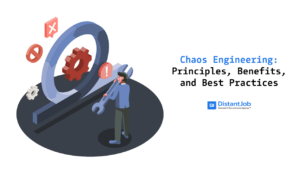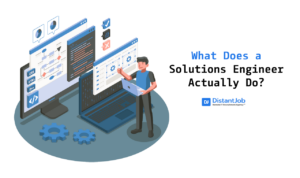Shopify is among the first names that come to mind when people think about a platform for building and running an e-commerce store. There are approximately 26.5 million online stores worldwide, and for building an online store Shopify is affordable enough for startups and is feature-rich enough to accommodate large businesses. So, it is no surprise that over two million e-commerce enterprises use the platform.
However, like its competitors, Shopify has drawbacks. Some users have complained about issues like payment holds and transaction fees. Now, you may wonder if this e-commerce platform is really worth it.
Below, we explore Shopify’s pros and cons so that you can decide if this platform is right for your business.
What is Shopify?
Shopify is a comprehensive, cloud-based e-commerce platform that handles everything you need to sell online. You can use Shopify to create an online store, market to customers, manage sales and inventory, and accept payments. Millions of merchants use it to run their stores, businesses, and blogs.
Shopify automates dozens of jobs so that you can run an online store with as little effort and as little payroll as possible.
How Shopify Works
Shopify offers its users monthly subscriptions, which include an admin panel where they can enter their store info, add products, and process orders.
Business owners can sell through multiple channels, including their website, social media platforms, online marketplaces, and brick-and-mortar locations. Shopify enables the synchronization of inventory and customer information across channels for simple management.
Since it is a secure, cloud-based, and hosted platform, you can safely access your data from any internet-enabled device. This also means you can run your business on the go, regardless of location.
To get started on Shopify:
- Sign up for your free Shopify trial. You can test the platform for three days for free or one month for $1.
- Connect your sales channels. The default sales channel is your online store, but you can select as many channels as you want.
- Enter your product data or find items to sell. Complete your product information, including the item details and pricing, for products you make or source yourself. You can also tap into the Shopify Handshake wholesale network to find items to sell.
- Set up your payments. You can use Shopify Payments or connect your own payment processor to your dashboard.
- Set up shipping and taxes. Under the settings tab, navigate to the shipping methods and fees section and set up your applicable sales tax information. You are now ready to start selling. However, you can set up your own Shopify online store to sell through your branded website.
- Process, ship, and track orders. As you receive orders, you will manage everything within your Shopify dashboard.
7 Shopify Pros
Here are seven reasons why Shopify may be the perfect solution for your business:
1. Easy To Manage Dashboard
Shopify allows you to easily access everything on your dashboard across all devices. The experience is the same whether you use your computer, phone, or iPad. You can see the number of orders and visitors and how much money you make daily, weekly, or monthly.
The dashboard configuration is straightforward and sleek compared to competitors. It loads fast and updates super quickly. It also shows how many orders need to be fulfilled, which is super important.
Your homepage will have a lot of insights, such as what customers purchased, the items they are browsing, and what they haven’t bought in a while. It will also reveal a percentage of the other stores that started during the same time as your store and how they are currently doing.
2. Customer Insights
A deep understanding of your shoppers enables you to create strategies to customize, target, and respond to their needs and behaviors. Shopify gives you precisely that.
When a customer orders on your website, you can see what they bought and where they came from. You will learn if they landed on your store via a Google search, Instagram, TikTok, or any other platform. Shopify will also tell you if they came from any specific website, such as a blog or an affiliate partner.
This way, you can analyze where your customers are coming from and what prompts them to buy.
You can also access other insights, such as their exact location (country, town, or city), age range, and email address. Shopify also gives you a live view of your store where you can see how many customers are in it in real-time and which part of the world they are in.
3. Integrations with other platforms
Shopify offers many apps and plugins to improve your store’s operations, such as PageFly, Yandex, and Nudgify. These apps cover various categories, from sales and marketing to inventory management and customer service. Whether you want to schedule a social media post, create a subscription business, or boost your SEO rankings, there’s a Shopify app that meets your needs.
Aside from Shopify native apps, you can also use plugins from third-party developers on the platform. Shopify also integrates well with most social platforms or software you may need, so you can sell on social storefronts. For example, you can sell directly to Instagram using Shopify.
4. Inventory management
This feature is suitable for merchants as the platform. lets you easily automate and track your inventory and receive low inventory alerts.
With Shopify, you don’t physically have to dig through your inventory and count each item. You can get alerts that tell you how much inventory you have, and you can place your order with your manufacturer accordingly.
For people who have retail stores, there is Shopify POS. Shopify POS is a point-of-sale app that syncs with Shopify and allows you to track your inventory across your retail locations, markets, or pop-up shops. It also lets you manage and view your store’s orders.
5. Hosting and security
Shopify is a fully hosted platform that handles hosting, security, and updates. This is beneficial because it relieves you of the technical aspects of managing a server. It also means you have access to advanced security features like SSL encryption and PCI Compliance, and regular security updates.
Therefore, you can rest assured that your customers’ personal and financial data are safe. Plus, Shopify can handle a high amount of traffic and scale with your business.
6. Free templates
Shopify has several easy-to-install templates that don’t require coding skills. Simply select from different templates and customize them according to your preference. You can add your logo, change the fonts and images, and add brand colors.
You can also list your products, and if you have multiple products, you can list them inside a catalog. The templates really do make it an easy website builder.
Before deciding, review all the different options and try the demo versions. Some are paid, and some are free, but the free version is more than enough for most people.
7. Excellent customer support
Shopify has a friendly and knowledgeable staff available 24/7 who can respond to your queries in a short time. You can contact them via their hotlines designated to different regions, email, or chat.
However, if no hotline is available for your region, that’s no problem. You can access the Shopify community, where users share their challenges and get answers. There’s also an FAQs database you can check at any time.
5 Shopify Cons
Let’s examine some disadvantages of using Shopify and what that may mean for your business.
1. Pricing
Price is one crucial factor to keep in mind before deciding to use Shopify. Shopify has 4 main pricing options:
- The Basic plan, which is $32 per month,
- Shopify at $92 a month,
- The Advanced plan at $399 per month, and
- Shopify Plus starts at $2,000 every month.
Although the Starter plan is a good way to test the waters, it is limited, especially if you are just launching your store. You will get the most value for this option selling on social media using a link that redirects buyers to your fairly basic store.
You will have to subscribe to the Basic plan or higher to enjoy more advanced features like the ability to customize a theme or blog.
Also, while all Shopify plans have essential e-commerce capabilities, some core features are only available for specific plans. For example, the Analytics feature is exclusive to the Shopify plan or higher. In addition, the higher your plan, the lower your Transaction Fees.
In the end, the plan you choose should be impacted by your current needs. If you’re just starting out, it may be beneficial to begin with a plan that offers core functionalities. Then, as your business scales, you may migrate to an advanced plan.
2. Less popular coding language
Shopify uses a programming language called Liquid. This company developed this language to promote the creation and adaptation of dynamic website themes.
Liquid is great because it was specifically created for the e-commerce platform and performs optimally. The issue is that this language is only heavily used in the Shopify ecosystem. Thus, if you’re unfamiliar with it, there is a learning curve before you can get the most out of your Shopify store.
Shopify uses Ruby, another less popular, open-source, feature-rich language. While this isn’t a major problem, it may limit your options if you are looking to hire a developer. This may also pose a problem if you are a developer seeking to implement complex features.
So, before choosing Shopify, understand that you will deal with these proprietary and less common coding languages.
3. No email hosting
Shopify does not support email hosting, meaning you can only launch your online store with the web hosting option. The silver lining is that there is a way around it.
You can use a third-party email hosting extension to forward emails from your customers directly to your email address. This allows you to communicate with your customers via email.
4. Shopify Payments
You may need to pay extra to use a third-party payment gateway. Shopify has Shopify Payments, which is Shopify’s payment service. However, if you don’t use Shopify Payments, you will be charged a transaction fee for each sale. Since Shopify Payments is not yet available in many countries, this can increase the cost of doing business for sellers in those countries.
5. Difficult to exit
Lastly, while Shopify offers flexibility and scalability with its service, the platform isn’t the easiest to exit. Many business owners have found migrating their products, themes, and store data to another provider challenging.
Shopify stores all information on its proprietary platform, so it requires a significant effort to transfer this data to another site. Your CSV report is the only thing you can take with you.
Therefore, it goes without saying that before signing up for a Shopify plan, consider if you want to use the platform for a long time.
Is Shopify Right for You?
Shopify is the go-to platform for e-commerce and for a good reason. It is user-friendly and focused on giving its users — store staff and customers, a smooth experience. Whether Shopify is the right e-commerce platform for your business will depend on how you analyze the pros and cons.
On the plus side, Shopify has an intuitive dashboard, provides valuable customer insights, offers many options for integration with apps you already use, and 24/7 customer support.
However, Shopify can be pricey, especially for a small business. Shopify Payments may be unavailable in your location, increasing operation costs and making it difficult to find a Shopify developer. Migrating from the platform to another provider is also difficult, so it requires a lot of thinking.
If you’re still undecided, consider using Shopify’s 14-day trial. There’s no better way to know than to test it for yourself.
Whether you choose Shopify or a custom solution entirely, we can also help. DistantJob can help you hire a Liquid-fluent Shopify developer or a more general Web Developer to set up a tailor-made online shop. Whatever your decision, you can find what you need with us.




